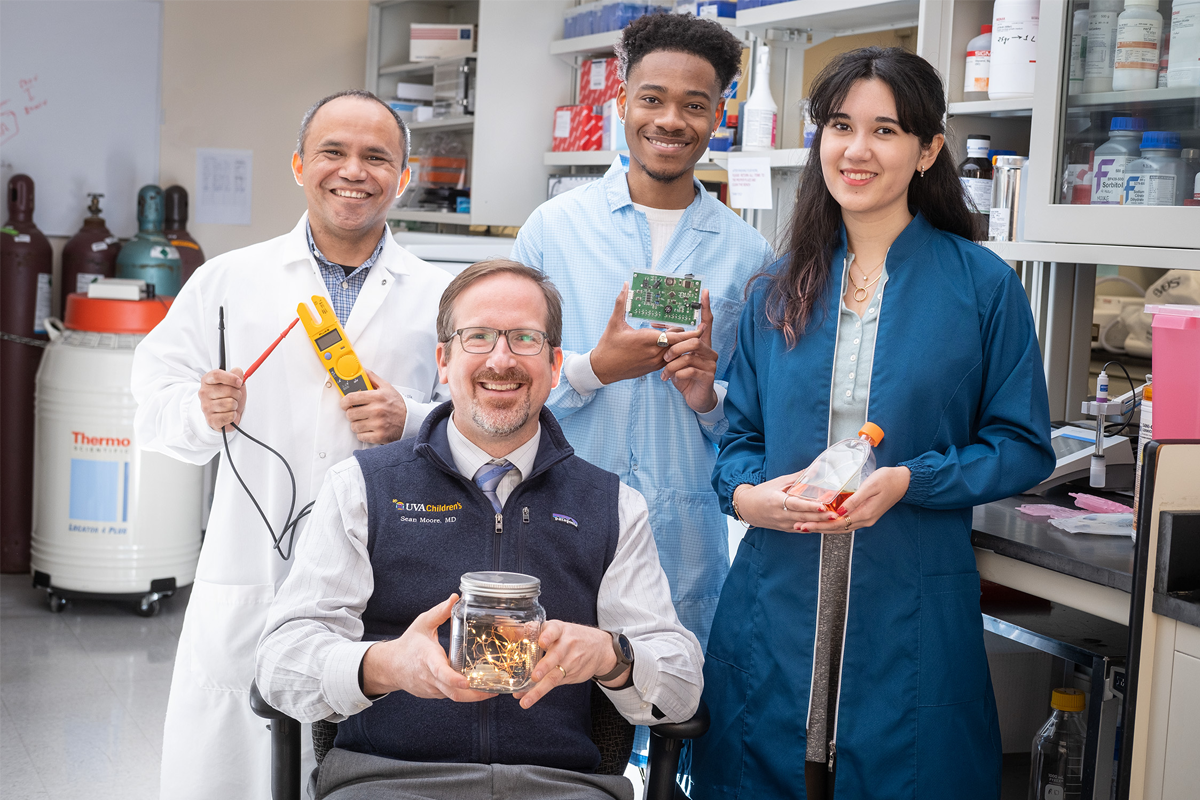
Back row, left to right: Vinicios Alves da Silva, Samir Muhammad, and Georgia Brousseau. Seated: Sean Moore (Photo by Coe Sweet)
Harnessing the power of light to transform Organ-on-a-chip technology is the focus of new research by Sean Moore, MD, and his research team. Dr. Moore, a professor and researcher in the Department of Pediatrics, is directing a project to combine Organ-on-a chip (OOAC) technology with bioluminescence to create a novel instrument allowing for real-time measurement of complex physiology in living cells. The new research is made possible through a $100,000 grant recently awarded to the Moore Lab by The Jefferson Trust.
Organ-on-a-chip technology represents a major step forward in preclinical research by more accurately reflecting human physiology. This technology more fully recreates the dynamic forces and physiology of the human body to create robust models which can accelerate the development of new medical treatments.
However, gathering data from the chips can be extremely challenging. Currently, detecting bioluminescence requires removing chips from the OOAC instrument and placing them into a separate device that lacks flow and stretch. This disruption makes real-time measurements impossible and increases risk of contamination.
Moore and his research team, Vinicios (Vini) Alves da Silva, PhD and Samir Muhammad and Georgia Brousseau, fourth-year UVA undergraduate students studying biomedical engineering, seek to combine OOAC with microphotomultiplier tubes to allow for real-time measurement of complex physiology. Through recombinant DNA technology, researchers engineer luciferase into the cells of humans to track the expression of individual genes and proteins. This luciferase produces light (think fireflies in the early evening) when exposed to compounds called “luciferins.”
Moore’s team plans to harness the power of bioluminescence to create a novel instrument (called OrChiD-Bio: Organs-on-a-Chip with Integrated Detection of Bioluminescence) that will allow scientists to detect bioluminescence in living cells implanted into organ-on-a-chip devices.
By adding integrative capabilities to OOAC systems, OrChiD-Bio will enhance their power as a biotechnology tool for precision medicine. According to the Moore team, “The future is bioluminescent!”
Filed Under: Faculty, Honors & Awards, Research
